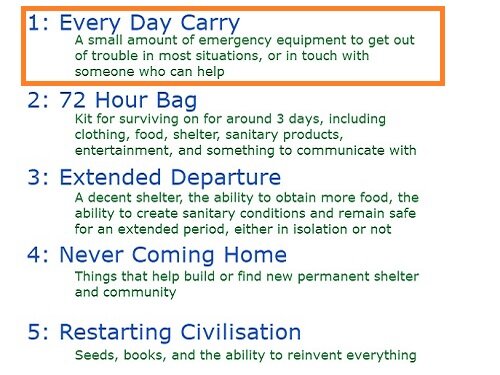Carry: Every Day
A week into lockdown, my mum rang me to tell me about her friend, Jean, who lives around the corner from her. My parents’ village is a combination of fabulous old buildings and newer houses, squeezed in over decades, on the commuter belt for London. Jean's house, a semi-detached cottage with a real fireplace and thatched roof, is part of the 'old village'.
The perils of semi-detached housing include not being in control of exactly what your neighbours are up to, and this means when your neighbour hasn't had their chimney swept, but nevertheless decides to set a fire in the grate, there’s a risk that your house will burn down along with theirs. This was the news my mum was calling to share. Jean had escaped the blaze with her life, but little else.
As Jean's experience shows, it doesn't take a disaster on a massive scale to upend our lives and leave us with only the items we could grab as we go.
With the pandemic, and the number of extreme environmental events in 2020, there’s been an increasing focus on 'Go Bags', and 'Bug Out Bags', in an attempt to encourage people to already be prepared should they need to leave their homes for several days.
Recommended to contain enough supplies and emergency gear to survive up to 72 hours, these bags are becoming so popular that you can even buy pre-made kits.
But what if you're not at home when disaster strikes? It's impractical to carry a rucksack large enough to contain all the supplies needed for 3 days with you if you're only popping out to the shops, which means your 72-hour Go Bag is sitting next to your front door and you're stuck across town with none of the supplies you need.
 |
| The various levels of "Be Prepared" |
 |
Not as extensive as the Bug Out Bag, an Every Day Carry (EDC) is light and portable, and full of useful things. You can carry it with you whenever you leave the house, and know that you are ready to cope with an emergency situation. Anything you put into it should be something you can use and will be helpful. This is a bag that you can live out of on a day-to-day basis, but with a small amount of emergency equipment to get out of trouble in most situations, or in touch with someone who can help.
Here is a suggested list of lightweight and portable things you might consider putting in a bag you can easily bring with you whenever you leave the house:
Priority 1 Carry: Every Day
- Phone
- Wallet/Purse with Cash
- ID
- Keys
- Prescription Medication
- [First Aid Kit](https://www.nhs.uk/common-health-questions/accidents-first-aid-and-treatments/what-should-i-keep-in-my-first-aid-kit/)
- Face Mask
- Hand Sanitiser
- Disinfectant Spray/Wipes
- Emergency Blanket
- Filled Water Bottle Personal Water Filter
- Energy/Protein Bars
- Torch/Headlamp
- Multitool or Swiss Army Knife
- Paracord
- Travel Toothbrush and Toothpaste
- Painkillers/Allergy Meds
- Water-/Sun-proof Hat
- Socks
- Undies
- Trousers
- Solar Portable USB Charger
- Freezer Bags
- Carrier Bags
All of the above should fit comfortably into a regular bag, backpack or baby change bag. This list is only a suggestion. You might want to add items or take some away that you feel aren’t right for you. Try it out! Using your EDC will help you identify what’s missing and what’s unnecessary.